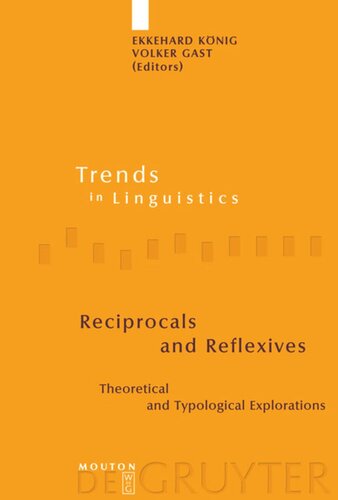

Most ebook files are in PDF format, so you can easily read them using various software such as Foxit Reader or directly on the Google Chrome browser.
Some ebook files are released by publishers in other formats such as .awz, .mobi, .epub, .fb2, etc. You may need to install specific software to read these formats on mobile/PC, such as Calibre.
Please read the tutorial at this link: https://ebookbell.com/faq
We offer FREE conversion to the popular formats you request; however, this may take some time. Therefore, right after payment, please email us, and we will try to provide the service as quickly as possible.
For some exceptional file formats or broken links (if any), please refrain from opening any disputes. Instead, email us first, and we will try to assist within a maximum of 6 hours.
EbookBell Team

0.0
0 reviewsThis collection of original papers is a representative survey of recent theoretical and cross-linguistic work on reciprocity and reflexivity. Its most remarkable feature is its combination of formal approaches, case studies on individual languages and broad typological surveys in one volume, showing that the interaction of formal approaches to grammar and typology may lead to new insights and results for both fields.
Among the major issues addressed in this volume are the following: How can our current knowledge about the space and limits of variation in the relevant domain be captured in a structural typology of reciprocity? What light can such a typology shed on the facts of particular languages or groups of languages (e.g. Austronesian)? How can recent descriptive and typological insights be incorporated into a revised and more adequate version of the Binding Theory? How do verbal semantics, argument structure and reciprocal markers interact? How can we explain the pervasive patterns of ambiguity observable in these two domains, especially the use of the same forms both as reflexive and reciprocal markers? What are the major sources in the historical development of reciprocal markers?
This combination of large-scale typological surveys with in-depth studies of particular languages provides new answers to old questions and raises important new questions for future research.